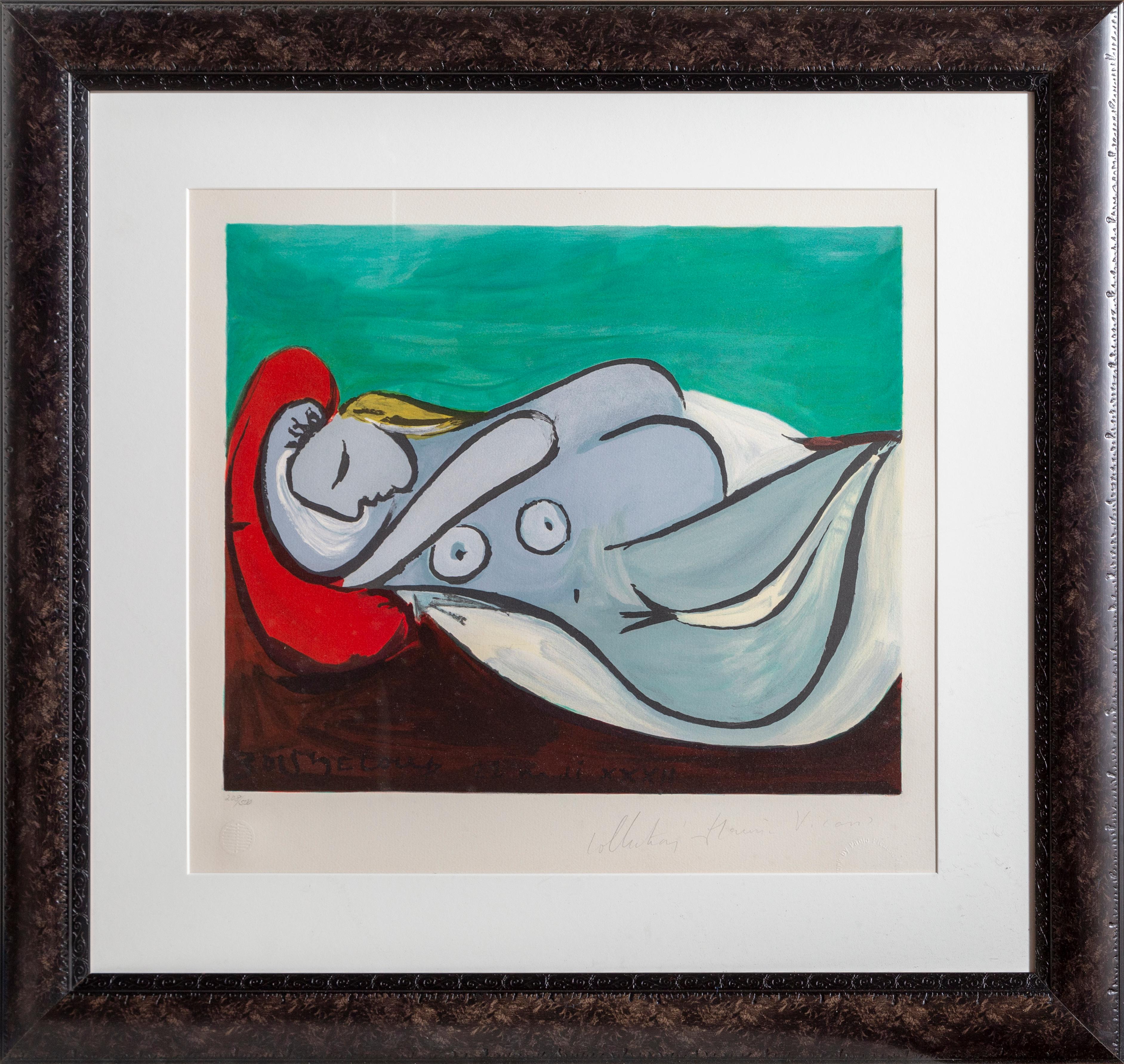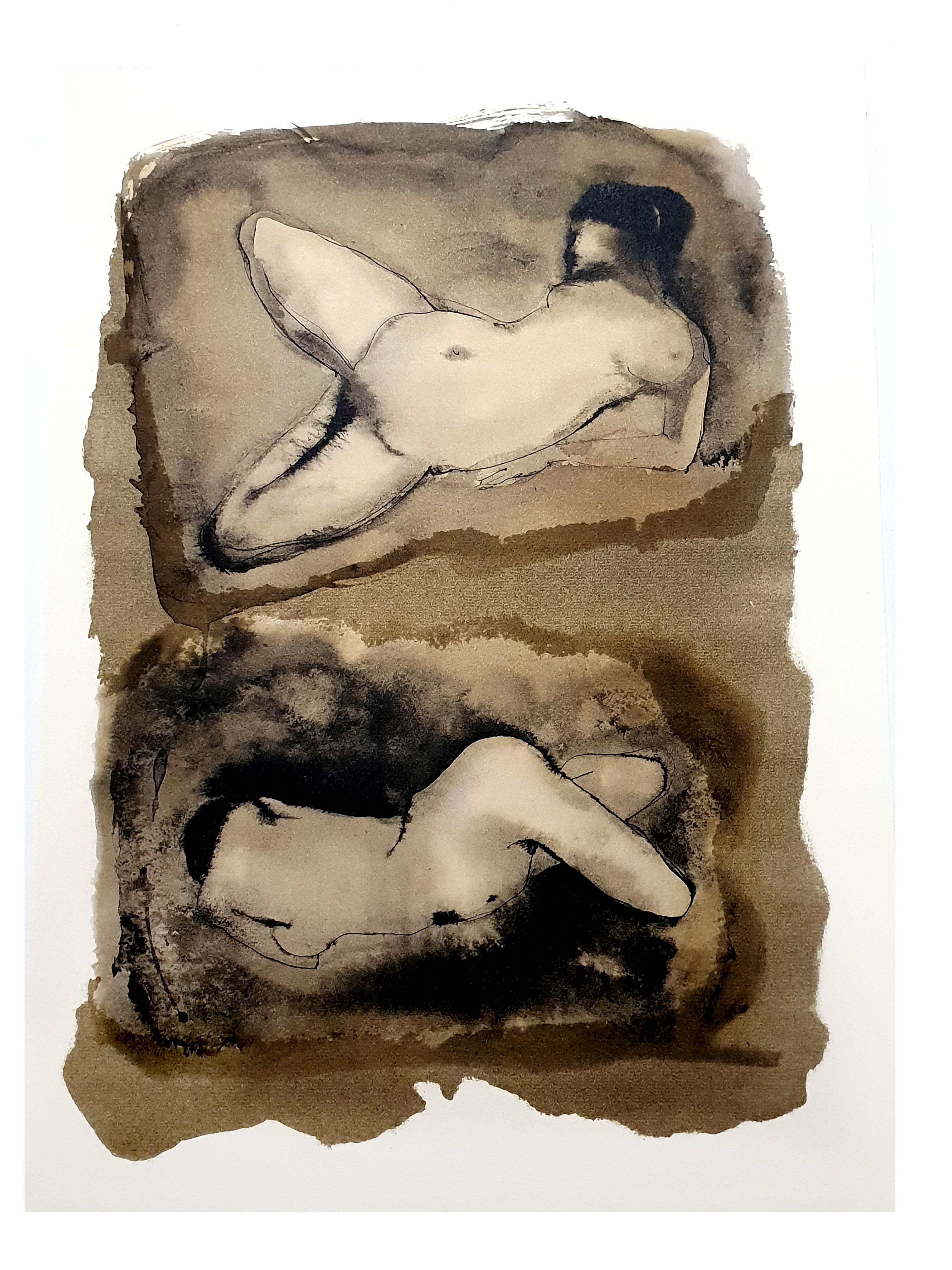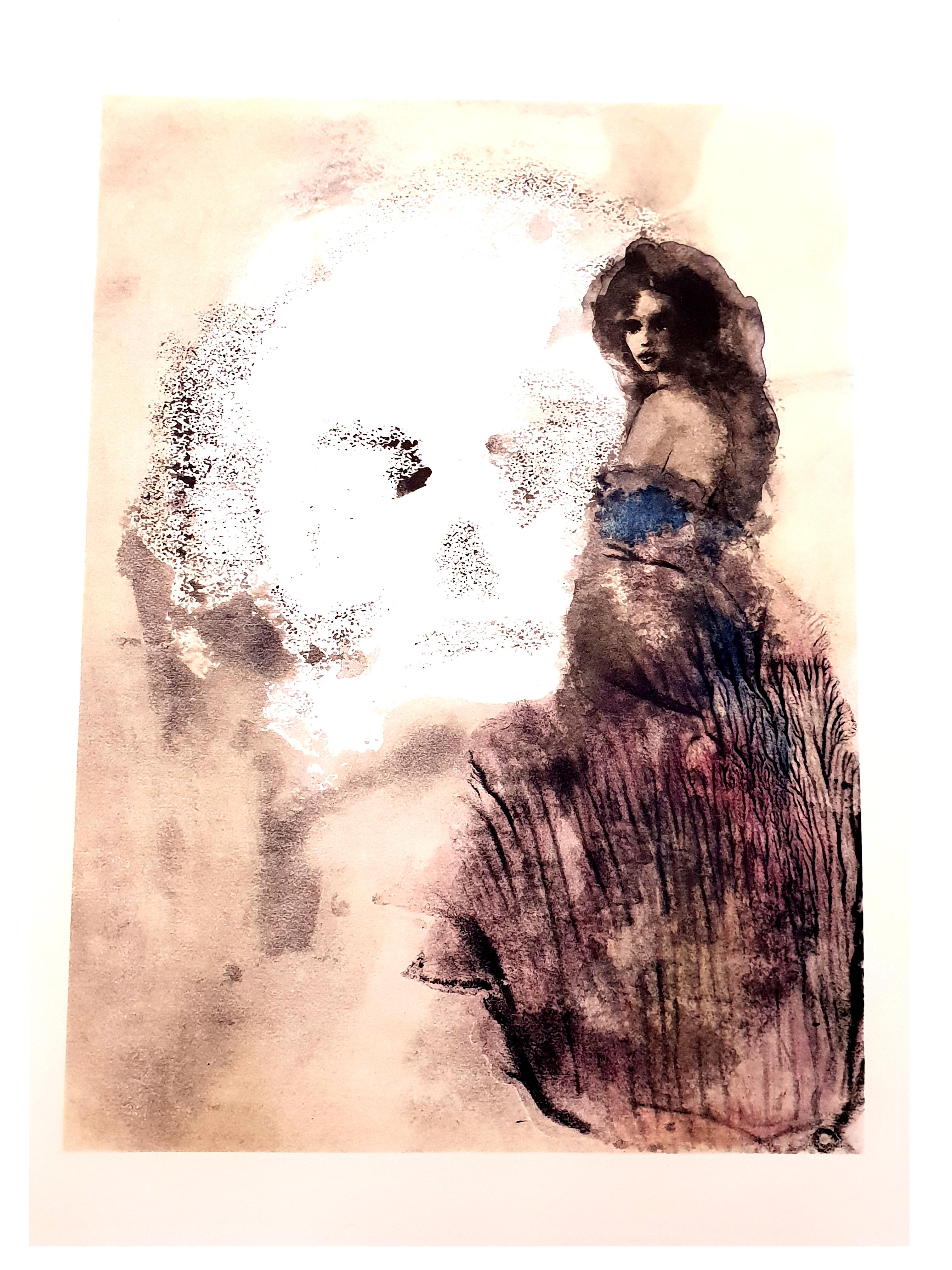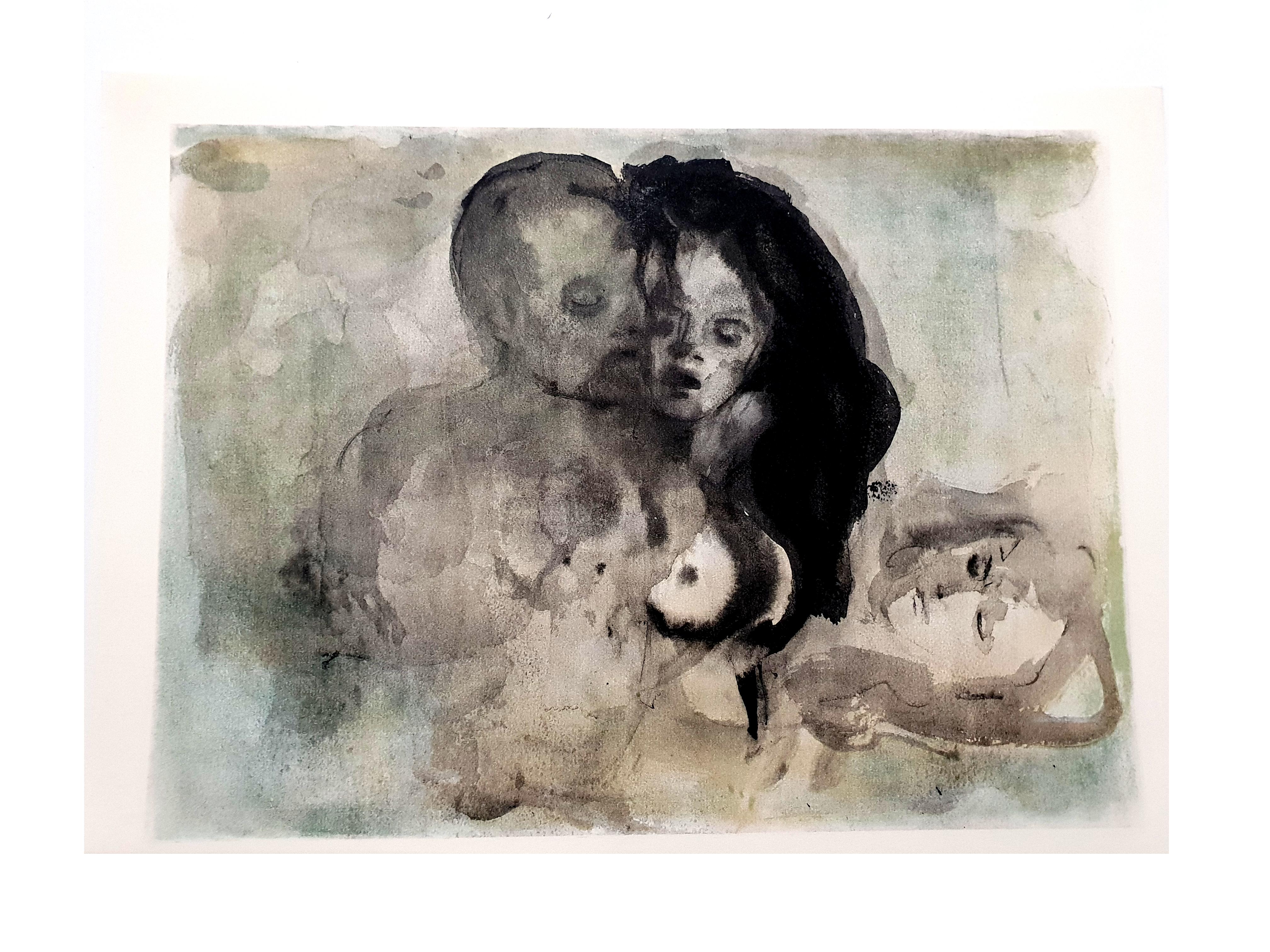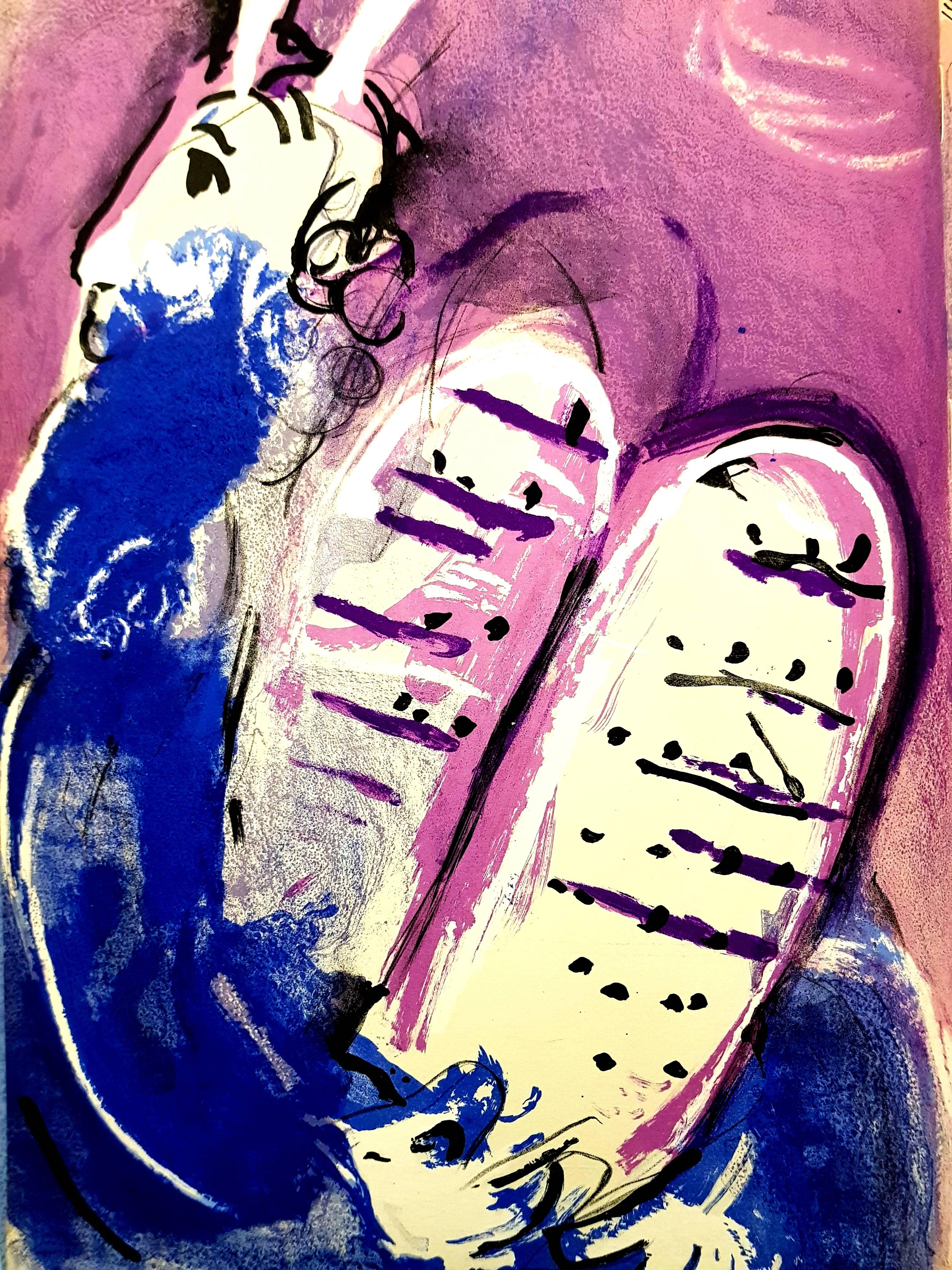André DerainAndre Derain Dessins Galeries Maeght 1950's
1950's
About the Item
- Creator:André Derain (1880-1954, French)
- Creation Year:1950's
- Dimensions:Height: 25.75 in (65.41 cm)Width: 19.5 in (49.53 cm)
- Medium:
- Movement & Style:
- Period:
- Condition:
- Gallery Location:Paonia, CO
- Reference Number:1stDibs: LU78032719483
André Derain
André Derain is best known as a leading figure of the avant-garde movement and — alongside Henri Matisse — a cofounder of Fauvism at the turn of the 20th century. Derain’s innovative use of expressive colors and simplified forms in his figurative paintings, landscapes and portraits continue to dazzle collectors and art enthusiasts everywhere.
Born in 1880 in Chatou, France, Derain began his formal art training at age 18 at the Académie Camillo, where he met Matisse and Maurice de Vlaminck. In 1905, Derain, Matisse and de Vlaminck exhibited their works at the Salon d’Automne in Paris, where critic Louis Vauxcelles used the word fauves (wild beasts) to describe the loosely connected collective of artists’ prioritization of audacious, vivid color in their energetic works, eventually leading to wide adoption of the term Fauvism.
In 1905 and 1906, Derain traveled to London, where he produced a series of Fauvist “form through color” paintings. These included The London Bridge, Charing Cross Bridge and A Corner of Hyde Park. After seeing a retrospective of Paul Gauguin’s work, Derain painted The Dance, a nude that is demonstrative of Gauguin’s influence in its bold, flat colors and in Derain’s depiction of primitive dancing figures.
In 1910, Derain destroyed many of his unsold works and began painting landscapes in the Cubist style of Paul Cézanne. He befriended Pablo Picasso and grew interested in African tribal art. After World War I, he focused on figurative and nude drawings and, in the early 1920s, abandoned Fauvism and Cubism altogether in favor of classical art. In 1930, the artist publicly condemned modernism, leading to his ostracization by the avant-garde community.
Derain was later honored with a retrospective of his works at the Kunsthalle in Bern, Switzerland. Additionally, the Exposition des Artistes Independants invited Derain to exhibit in 1937.
Derain’s wide range of styles — from Fauvism and Cubism to classicism and Postimpressionism — influenced many artists throughout his lifetime. Today, Derain’s work is held in the permanent collections of the Museum of Modern Art in New York, the Tate gallery in London, the Musée d’Orsay in Paris and the State Hermitage Museum in St. Petersburg.
On 1stDibs, discover original André Derain prints, drawings and paintings.
- ShippingRetrieving quote...Ships From: Paonia, CO
- Return PolicyA return for this item may be initiated within 7 days of delivery.
- Leaves of Love-Orange Lady lithograph by Alessandro NastasioBy Alessandro NastasioLocated in Paonia, COLeaves of Love-Orange Lady is an original signed limited edition (XXII/ XXX) lithograph by Alessandro Nastasio showing a full figured orange colored nude holding flowers in each hand standing with her bare feet on the ground. She appears to have wing like orange and green leaves surrounding her. Paper size 18.25 x 11.75 image 13 x 7.75 in very good condition. Alessandro Nastasio was born in Milan in 1934. In 1952 he followed the “free school of the nude” led by Aldo Salvatori. In 1960 he attended the Atelier of Giorgio Upilio where Giacometti, Lam, Fontana, De Chirico worked and where he had the opportunity to study the themes of the inspiring myths. He worked at the MAF foundry with the master Tullio Figini who shared the secrets of the lost wax Renaissance fusion and where he met the masters Crocetti, Manfrini, Manzu , Minguzzi, Fabbri,. He then moved on to Quinto de Stampi at the De Andreis foundry where Marino Marini, Pomodoro, Rudy Wach, Strebelle, Negri and Rosental operated. A regular reader of the great sapienzal texts of antiquity, he trained in particular on the Bible which he illustrated with woodcuts, aquatints, etchings and linocuts, especially the Song of Songs, the book of Ecclesiastes and several pages of the Gospels He also drew his inspiration from the philosophical-religious tradition of the Eastern world through the reading of Rig-Veda, Upanisad and the Matnavi of Rumi. In 1966-67 he obtained the chair at the Academy of Fine Arts of Brera and for thirty years he devoted himself to the teaching of Art Education in various schools. Nastasio created works both pictorial and plastic in collaboration with famous architects such as: Figini and Pollini, De Carli, Gardella, Faranda, Selleri, Ponti. His great talent soon came to the attention of various art dealers: first Max G...Category
20th Century Abstract Impressionist Nude Prints
MaterialsLithograph
- Hommage a Cranach lithograph by Salvador Dali 1971By Salvador DalíLocated in Paonia, COHommage a Cranach is a lithograph with original etching by Salvador Dali and published by Transworld Art in 1971. This limited edition print is number A110 out of 175 and is i...Category
1970s Surrealist Figurative Prints
MaterialsLithograph
- Biblia Sacra Original Sin Salvador DaliBy Salvador DalíLocated in Paonia, COOriginal Sin is an original lithograph from Salvador Dali's five volume Biblia Sacra Suite published in Rome by Rizzoli , 1965-1969. Ref. is the Official Catalog of the Graphic...Category
1960s Surrealist Figurative Prints
MaterialsLithograph
- The Judgement of Paris original E.A. etching by Salvador Dali Mythology SuiteBy Salvador DalíLocated in Paonia, COThe Judgement of Paris ( Three Graces ) is an original limited edition Epreuve d'Artiste ( EA ) etching by Salvador Dali from the Mythology Suite. ( ref: Field 63-3.I / Michler & Lopsinger 123 ). Salvador Dalí’s mythology...Category
1960s Surrealist Figurative Prints
MaterialsEtching
- The Milky Way ( La Voie Lactee ) Etching by Salvador Dali The Mythology suiteBy Salvador DalíLocated in Paonia, COThe Milky Way ( La Voie Lactee ) is from The Mythology Suite by Salvador Dali. It is the fourteenth plate created out of sixteen in the years 1960-...Category
1960s Surrealist Figurative Prints
MaterialsEtching
- Leonor Fini Erotica I etchingBy Leonor FiniLocated in Paonia, COAn etching by Leonor Fini depicting three men and three woman interacting in various ways and one of the woman sitting in the foreground is playing the lute. This is a signed limited edition etching numbering 68 out of 100. There is also a signature by the artist embossed in the paper just below the pencil signature. The paper is very fibrous and is deckle -edged. The paper size is 26 x 20.25 Image size 15.50 x 12.50. This original rare etching is in very good condition. Argentinian-born artist Leonor Fini (1907-1996) is considered one of the great female artists of the twentieth century. She moved to Paris in the early 1930’s where she spent most of her life and almost immediately formed friendships with Salvador Dali, Cartier- Bresson, Max Ernst and other intellectuals of the time. At twenty five she had her first one person show in Paris and was included in the 1936 pivotal exhibition at MOMA…Fantastic Art, Dada and Surrealism…..and that same year had an exhibition at a famous avant garde gallery in New York. Although Fini never considered herself a Surrealist she maintained close personal relationships with several members of the group. One can see how their ideology influenced her work but she remained firmly rooted in the tradition of Symbolism, Metaphysics and Italian and German Romanticism Her works can be found in most important collections of modern art around the world. Fini was renowned as a portraitist and as a painter of erotic sexual tensions with a mysterious atmosphere. She was adamant about being independent and not belonging to any one group. She lived life on her own terms and is sometimes referred to as …..the female Dali. She was also involved with designing for fashion and creating elaborate sets for opera and theatre. As a feminist she was definitely ahead of the times. She produced the first erotic male nude...Category
1970s Surrealist Figurative Prints
MaterialsEtching
- Formeuse a l'Oreiller (Marie-Therese Walter), Cubist Lithograph by Pablo PicassoBy Pablo PicassoLocated in Long Island City, NYA lithograph from the Marina Picasso Estate Collection after the Pablo Picasso painting "Formeuse a l'Oreiller (Marie-Therese Walter)". The original painting was completed in 1932. ...Category
1980s Modern Figurative Prints
MaterialsLithograph
- Leonor Fini - Duo - Original LithographBy Leonor FiniLocated in Collonge Bellerive, Geneve, CHLeonor Fini - Duo - Original Lithograph The Flowers of Evil 1964 Conditions: excellent Edition: 500 Dimensions: 46 x 34 cm Editions: Le Cercle du Livre Précieux, Paris Unsigned and...Category
1960s Modern Nude Prints
MaterialsLithograph
- Leonor Fini - Road to Death - Original LithographBy Leonor FiniLocated in Collonge Bellerive, Geneve, CHLeonor Fini - Road to Death - Original Lithograph The Flowers of Evil 1964 Conditions: excellent Edition: 500 Dimensions: 46 x 34 cm Editions: Le Cercle du Livre Précieux, Paris Un...Category
1960s Modern Nude Prints
MaterialsLithograph
- Leonor Fini - Lovers - Original LithographBy Leonor FiniLocated in Collonge Bellerive, Geneve, CHLeonor Fini - Lovers - Original Lithograph The Flowers of Evil 1964 Conditions: excellent Edition: 500 Dimensions: 46 x 34 cm Editions: Le Cercle du Livre Précieux, Paris Unsigned ...Category
1960s Modern Nude Prints
MaterialsLithograph
- Marc Chagall - Moses with Tablets of Stone - Original LithographBy Marc ChagallLocated in Collonge Bellerive, Geneve, CHMarc Chagall, Original Lithograph depicting an instant of the Bible. Technique: Original lithograph in colours Year: 1956 Sizes: 35,5 x 26 cm / 14" x 10.2" (sheet) Published by: Éditions de la Revue Verve, Tériade, Paris Printed by: Atelier Mourlot, Paris Documentation / References: Mourlot, F., Chagall Lithograph [II] 1957-1962, A. Sauret, Monte Carlo 1963, nos. 234 and 257 Marc Chagall (born in 1887) Marc Chagall was born in Belarus in 1887 and developed an early interest in art. After studying painting, in 1907 he left Russia for Paris, where he lived in an artist colony on the city’s outskirts. Fusing his own personal, dreamlike imagery with hints of the fauvism and cubism popular in France at the time, Chagall created his most lasting work—including I and the Village (1911)—some of which would be featured in the Salon des Indépendants exhibitions. After returning to Vitebsk for a visit in 1914, the outbreak of WWI trapped Chagall in Russia. He returned to France in 1923 but was forced to flee the country and Nazi persecution during WWII. Finding asylum in the U.S., Chagall became involved in set and costume design before returning to France in 1948. In his later years, he experimented with new art forms and was commissioned to produce numerous large-scale works. Chagall died in St.-Paul-de-Vence in 1985. The Village Marc Chagall was born in a small Hassidic community on the outskirts of Vitebsk, Belarus, on July 7, 1887. His father was a fishmonger, and his mother ran a small sundries shop in the village. As a child, Chagall attended the Jewish elementary school, where he studied Hebrew and the Bible, before later attending the Russian public school. He began to learn the fundamentals of drawing during this time, but perhaps more importantly, he absorbed the world around him, storing away the imagery and themes that would feature largely in most of his later work. At age 19 Chagall enrolled at a private, all-Jewish art school and began his formal education in painting, studying briefly with portrait artist Yehuda Pen. However, he left the school after several months, moving to St. Petersburg in 1907 to study at the Imperial Society for the Protection of Fine Arts. The following year, he enrolled at the Svanseva School, studying with set designer Léon Bakst, whose work had been featured in Sergei Diaghilev's Ballets Russes. This early experience would prove important to Chagall’s later career as well. Despite this formal instruction, and the widespread popularity of realism in Russia at the time, Chagall was already establishing his own personal style, which featured a more dreamlike unreality and the people, places and imagery that were close to his heart. Some examples from this period are his Window Vitebsk (1908) and My Fianceé with Black Gloves (1909), which pictured Bella Rosenfeld, to whom he had recently become engaged. The Beehive Despite his romance with Bella, in 1911 an allowance from Russian parliament member and art patron Maxim Binaver enabled Chagall to move to Paris, France. After settling briefly in the Montparnasse neighborhood, Chagall moved further afield to an artist colony known as La Ruche (“The Beehive”), where he began to work side by side with abstract painters such as Amedeo Modigliani and Fernand Léger as well as the avant-garde poet Guillaume Apollinaire. At their urging, and under the influence of the wildly popular fauvism and cubism, Chagall lightened his palette and pushed his style ever further from reality. I and the Village (1911) and Homage to Apollinaire (1912) are among his early Parisian works, widely considered to be his most successful and representative period. Though his work stood stylistically apart from his cubist contemporaries, from 1912 to 1914 Chagall exhibited several paintings at the annual Salon des Indépendants exhibition, where works by the likes of Juan Gris, Marcel Duchamp and Robert Delaunay were causing a stir in the Paris art world. Chagall’s popularity began to spread beyond La Ruche, and in May 1914 he traveled to Berlin to help organize his first solo exhibition, at Der Sturm Gallery. Chagall remained in the city until the highly acclaimed show opened that June. He then returned to Vitebsk, unaware of the fateful events to come. War, Peace and Revolution In August 1914 the outbreak of World War I precluded Chagall’s plans to return to Paris. The conflict did little to stem the flow of his creative output, however, instead merely giving him direct access to the childhood scenes so essential to his work, as seen in paintings such as Jew in Green (1914) and Over Vitebsk (1914). His paintings from this period also occasionally featured images of the war’s impact on the region, as with Wounded Soldier (1914) and Marching (1915). But despite the hardships of life during wartime, this would also prove to be a joyful period for Chagall. In July 1915 he married Bella, and she gave birth to a daughter, Ida, the following year. Their appearance in works such as Birthday (1915), Bella and Ida by the Window (1917) and several of his “Lovers” paintings give a glimpse of the island of domestic bliss that was Chagall’s amidst the chaos. To avoid military service and stay with his new family, Chagall took a position as a clerk in the Ministry of War Economy in St. Petersburg. While there he began work on his autobiography and also immersed himself in the local art scene, befriending novelist Boris Pasternak, among others. He also exhibited his work in the city and soon gained considerable recognition. That notoriety would prove important in the aftermath of the 1917 Russian Revolution when he was appointed as the Commissar of Fine Arts in Vitebsk. In his new post, Chagall undertook various projects in the region, including the 1919 founding of the Academy of the Arts. Despite these endeavors, differences among his colleagues eventually disillusioned Chagall. In 1920 he relinquished his position and moved his family to Moscow, the post-revolution capital of Russia. In Moscow, Chagall was soon commissioned to create sets and costumes for various productions at the Moscow State Yiddish...Category
1950s Modern Figurative Prints
MaterialsLithograph
- Homme Couchee et Femme Assise, Cubist Lithograph by Pablo PicassoBy Pablo PicassoLocated in Long Island City, NYA lithograph from the Marina Picasso Estate Collection after the Pablo Picasso ink and wash drawing "Homme Couchee et Femme Assise". The original dr...Category
1980s Modern Nude Prints
MaterialsLithograph
